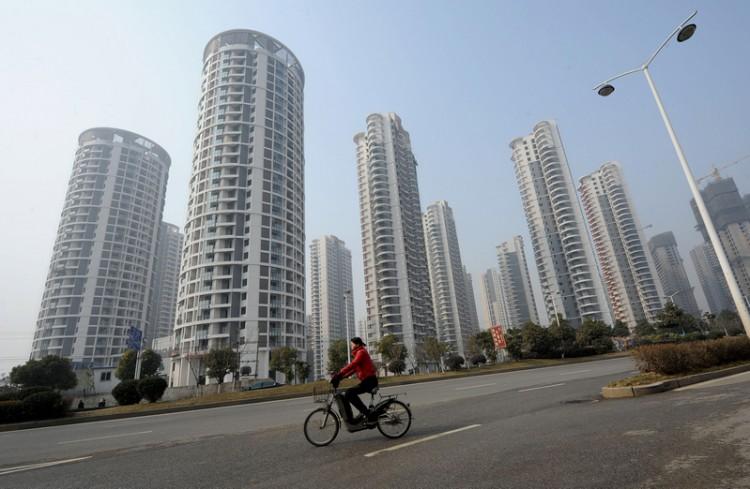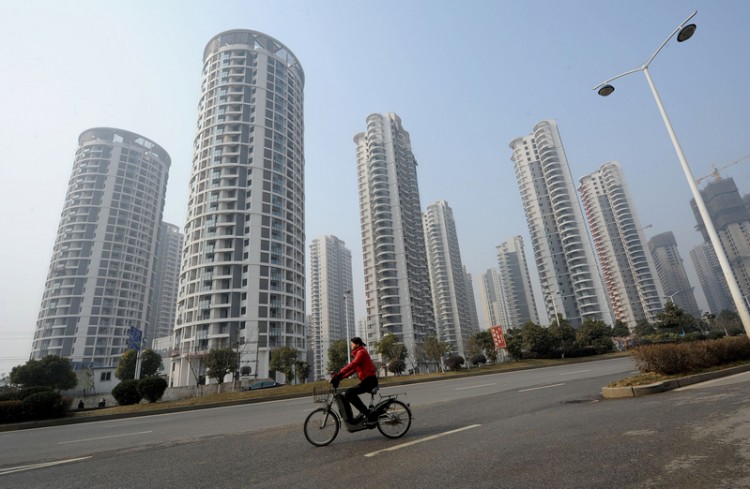The total debt of the Chinese real estate market has reached 1.24 trillion yuan (US$196,678,668,295), according to statistics from Wind Information.
The mainland Chinese real estate market debt-to-asset ratio has reached historic highs, hitting 71.28 percent. As of Sept. 30, 2011, eight large real estate companies have a debt-to-asset ratio over 85 percent; and 16 companies’ ratios were over 80 percent.
The huge debt is due to pressure from five major areas: bank loan, overseas private placement bond, trust, real estate fund, and private lending. Most of the debt will expire in the second half of this year, according to Chen Jinsong, chairman of World Union Real Estate, at a recent press conference.
Chen said real estate developers must face the debt crisis in 2012 and liquid cash is becoming extremely important. Even large companies like Vanke, the biggest real estate developer in the country, are selling like crazy to store up cash just to survive.
To make matters worse, sales fell across the board during the first quarter of this year. Commercial housing sales dropped 13.6 percent in footage and 14.6 percent in value, according to statistics from the Audit Bureau.
Although last week the mortgage rate for first time home-owners decreased a little, real estate expert Chen Zhencheng considers this type of market stimulation ineffective and that the market will continue to decline.
Additionally, government control of the real estate market is still tight. The buying limitation has not been relaxed and banks have started to limit the loan activities of small and mid-size developers.
Mainland media reported that China Construction Bank headquarters issued real estate lending rules to its 38 branches for 2012, stipulating that “branches cannot issue loans to small enterprises.” The document requires that “the first level branches whose development loan to public loan ratio are over 15 percent, and the branches located in limited purchase zones should strictly control new loan issues and decrease the concentration of loans.”
Meanwhile, other major Chinese banks have been very synchronized in expressing their intent to decrease the number of real estate loans based on market conditions, regional situation, and client structure.
Some developers said that since the second half of last year, it has been increasingly difficult to get a loan—and next to impossible for small developers. The success rate of project loans is also decreasing. Some interest rates are 20 percent higher than the base rate.
Analysts say if banks stop issuing loans to small developers all together, some developers with low cash reserve would be bankrupt.
Late last month, Yuhang Court in Zhejiang Province processed the bankruptcy case of Jinxing Real Estate Development Co. from Hangzhou City—a poster-child case for what small and mid-sized real estate corporations are facing.
In the past year or so, Chinese real estate overseas private placement bonds traded in Hong Kong reached about 1,000 projects with two-year terms. They will mature by mid-2012. In 2010, about 3.6 trillion yuan in trust was sold nationwide. In the first half of 2011, 4 trillion was sold, among which one third was personal finance products from banks and two thirds were real estate trusts. They will mature in 2012 and 2013.
In the past year, 100 billion yuan worth of real estate funds were sold. Most of which are real estate project funds. Private lending was 4 trillion last year, half of which went to real estate. Additionally, government debt, mortgage, up- and down-stream financing, which includes developer construction and presales, are all circulating in the real estate system.
Securities analysts say 46 percent of short and long term interest loans have to be paid off in 2012.
Read Original Chinese article.
[email protected]





